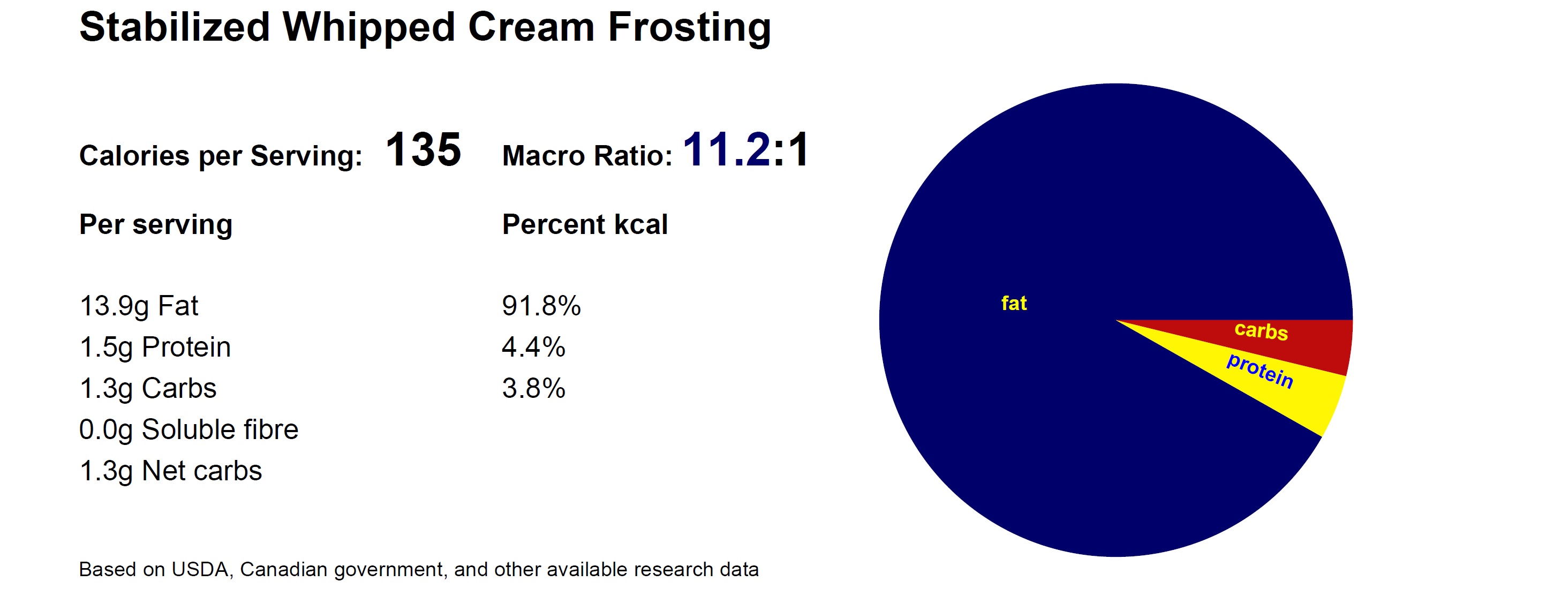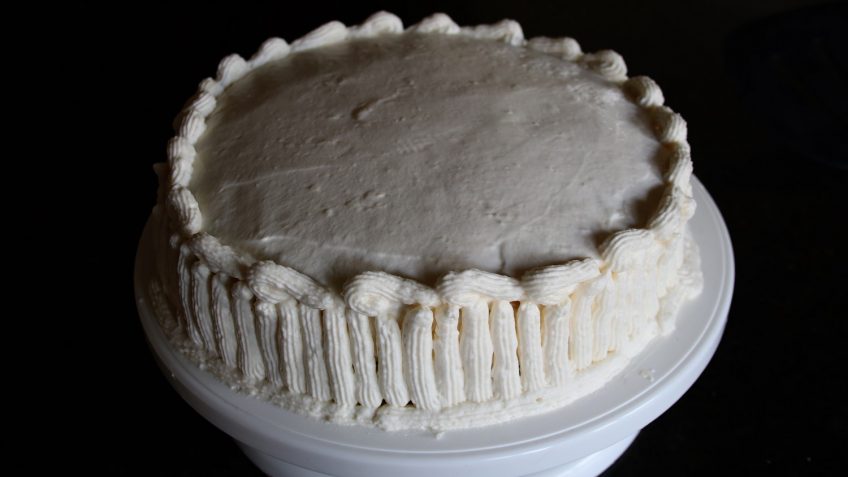1. In a small bowl or glass, combine gelatin and cold water. Stir until gelatin has completely dissolved. Let stand until thick
2. Place the bowl into a pot with water over low heat, stirring constantly until the gelatin dissolves. Let cool to room temperature but not to solidify again.
4. Add the vanilla and powdered sweetener (OPTIONAL- depending if you want a sweeter frosting). Whip to just combine
5. Reduce speed to low and in a steady stream pour in the liquified gelatin to the whipping cream
6. Whip at high speed until medium-stiff peaks form. CAUTION – do not overwhip as the whipping cream will go buttery, resulting in clumping which will make the frosting unusable
7. Cover the mixer bowl with cling wrap and refrigerate for one hour to allow cream to stabilize
8. Use directly on cake and spread with a spatula or place into piping bag to decorate

Gelatin is used in molded desserts. The raw material for gelatin is the naturally occurring protein, collagen. When dissolved in hot water then cooled, it forms a jelly. Granulated gelatin is the most common form of unsweetened gelatin. Unsweetened gelatin is typically soaked in a cold liquid for 3-5 minutes before dissolving it. This softens and swells the granules so they will dissolve smoothly when heated. Leaf or sheet gelatin is also available, although not as common as the granulated form. Leaf gelatin requires a longer soaking time than granulated gelatin.
Many European recipes call for leaf gelatin. You can successfully substitute powdered gelatin for leaf gelatin in any recipe. One package (1 tablespoon) of powdered gelatin equals 4 sheets. One package of gelatin is enough to gel 2 cups of liquid.
For vegetarian version: Alternative choices include Agar-Agar, which is derived from seaweed. Agar-Agar is sold in noodle-like strands, in powdered form or in long blocks. Other options are arrowroot, guar gum, xanthan gum, pectin and kudzu.
All rights reserved © Angela Wilkes 2017-2025 Privacy Policy

1. In a small bowl or glass, combine gelatin and cold water. Stir until gelatin has completely dissolved. Let stand until thick
2. Place the bowl into a pot with water over low heat, stirring constantly until the gelatin dissolves. Let cool to room temperature but not to solidify again.
4. Add the vanilla and powdered sweetener (OPTIONAL- depending if you want a sweeter frosting). Whip to just combine
5. Reduce speed to low and in a steady stream pour in the liquified gelatin to the whipping cream
6. Whip at high speed until medium-stiff peaks form. CAUTION – do not overwhip as the whipping cream will go buttery, resulting in clumping which will make the frosting unusable
7. Cover the mixer bowl with cling wrap and refrigerate for one hour to allow cream to stabilize
8. Use directly on cake and spread with a spatula or place into piping bag to decorate

Gelatin is used in molded desserts. The raw material for gelatin is the naturally occurring protein, collagen. When dissolved in hot water then cooled, it forms a jelly. Granulated gelatin is the most common form of unsweetened gelatin. Unsweetened gelatin is typically soaked in a cold liquid for 3-5 minutes before dissolving it. This softens and swells the granules so they will dissolve smoothly when heated. Leaf or sheet gelatin is also available, although not as common as the granulated form. Leaf gelatin requires a longer soaking time than granulated gelatin.
Many European recipes call for leaf gelatin. You can successfully substitute powdered gelatin for leaf gelatin in any recipe. One package (1 tablespoon) of powdered gelatin equals 4 sheets. One package of gelatin is enough to gel 2 cups of liquid.
For vegetarian version: Alternative choices include Agar-Agar, which is derived from seaweed. Agar-Agar is sold in noodle-like strands, in powdered form or in long blocks. Other options are arrowroot, guar gum, xanthan gum, pectin and kudzu.
You must be logged in to post a comment